around 1989 at the age of 20 I had a hair transplant , had approx 12 grafts put into each of my temporal areas as I was beginning to notice some receding. These were the old style plugs, my hair has now receded beyond these, so now I pluck hairs from the plugs to prevent the doll hair look. The problem is that the plugs are noticeable, they are hypopigmented, they are relatively smooth and level. What do you recommend? I would prefer to avoid any more transplants. Is there any procedure to give me a more natural appearance? Would dermabrasion work? Could the Relume laser restore the pigmentation? Any and all info would be greatly appreciated. Thank you.

I have written extensively on the issue of repairs and published these writings in a prestigious peer reviewed journal. This publication has become the standard for repair techniques in the field.
What you asked is important to people like you and others. Generally, there are many approaches to the problem. First of all, most people in your situation have lost trust, so trusting another doctor to do surgery on your is often the most difficult step. Even patients who come to me because of my reputation or due to referrals from other repair patients I have helped, come with an ingrained mistrust. There is a reason for the old cliché, “once burned, twice shy.”
With that said, the other problems that you must face are how much time it will take to fix the problem, how many procedures, and how much it will cost. A reasonable goal should be to complete the process in one to three surgical procedures, depending upon how bad the problem is. The third and most important issue that must be considered is the end result – what is the likelihood that the problem will be fixed and gone? To address your questions, I would start by giving you an example of a recent patient I did. This is his second surgery and I would expect that it will be his last with a certainty factor of nearly 100%.
You also have a special problem, with the ‘plugs’ placed in the temples. These are best treated with removal. There are many ways to remove them, but the key is to make sure that the removal process does not leave you with bad scars that are as bad as the plugs.
This patient I am about to show, is a story that is best told by pictures. His problem is similar to yours, without the temple transplants.
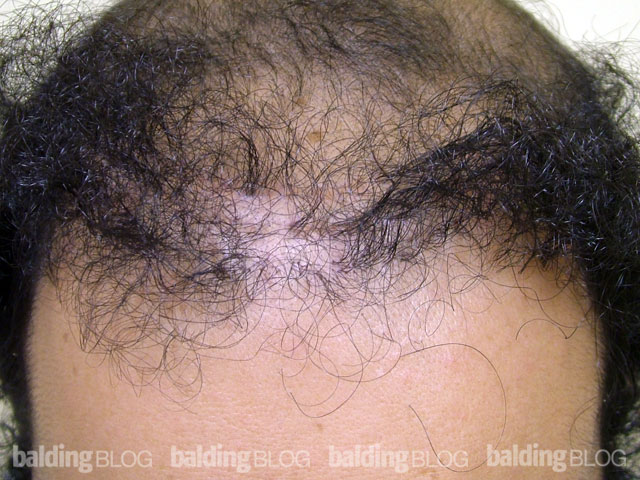
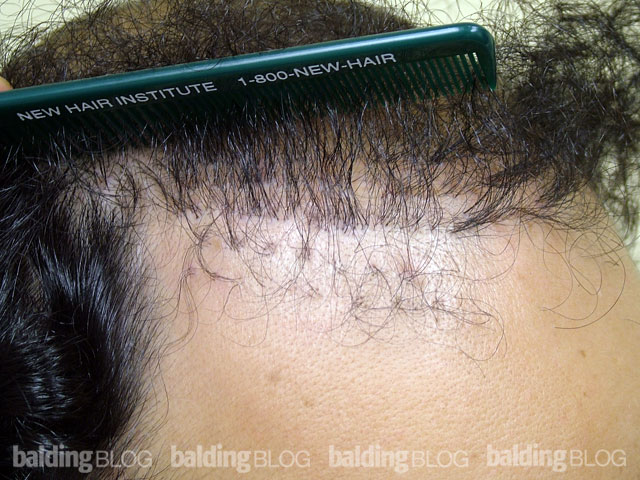
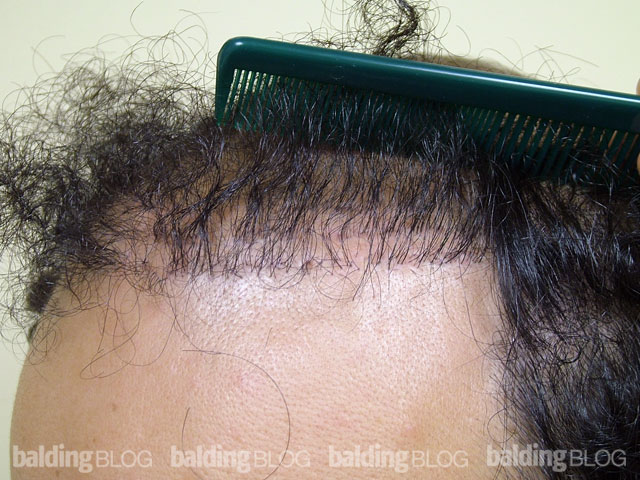
Set 1 (above) shows his before picture with the plugs in clear view.
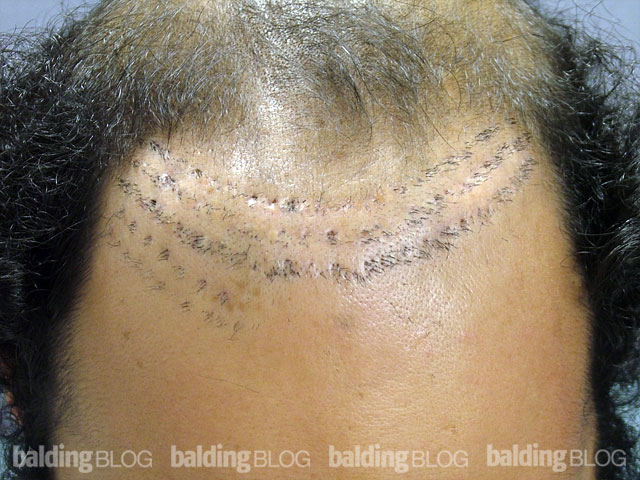
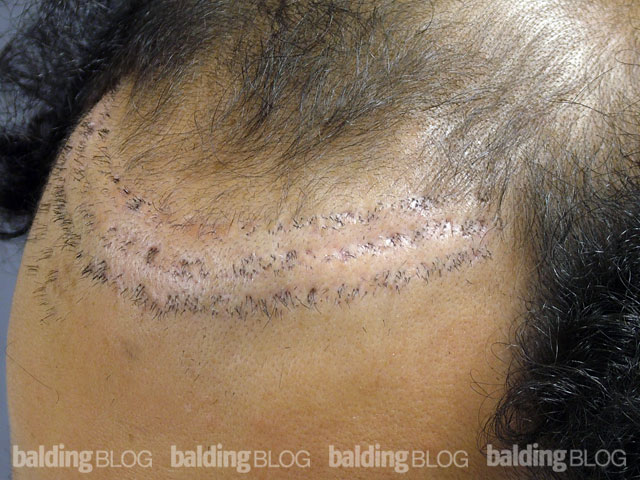
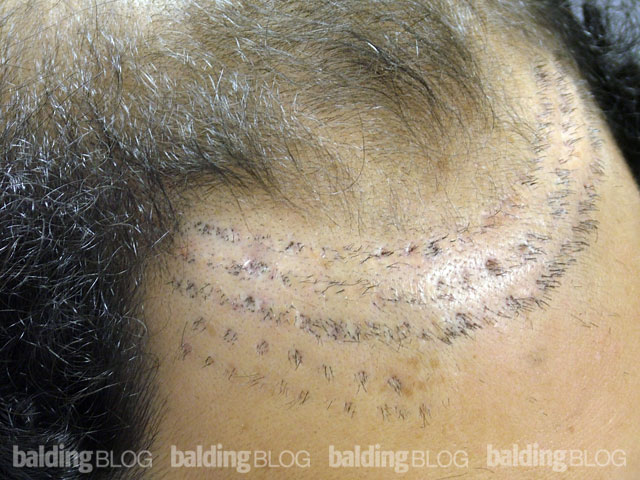
Set 2 (above) shows the shaved version of set one.
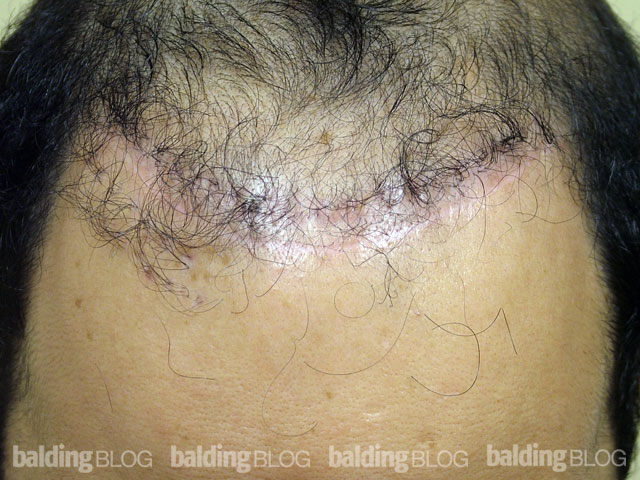
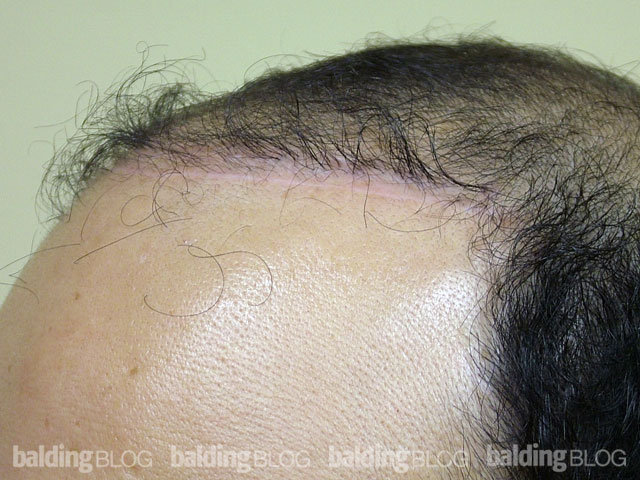
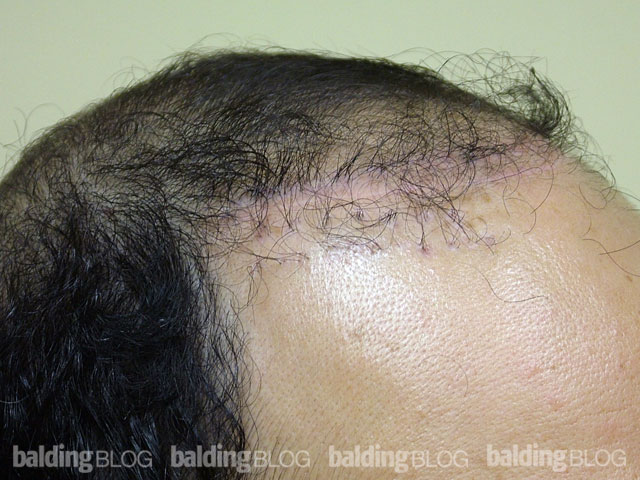
Set 3 (above) shows his photographs 6 weeks after the excision surgery that removed two rows of plugs. Note a very fine line reflecting the surgical excision.
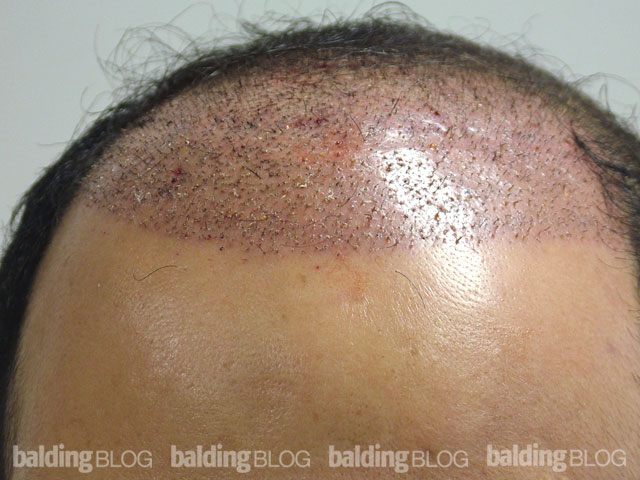
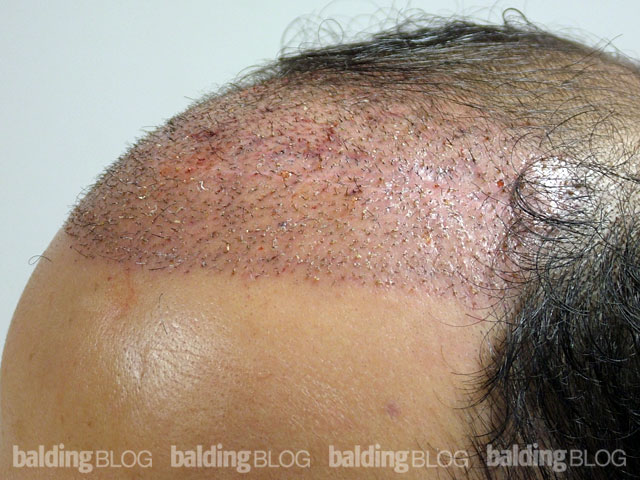
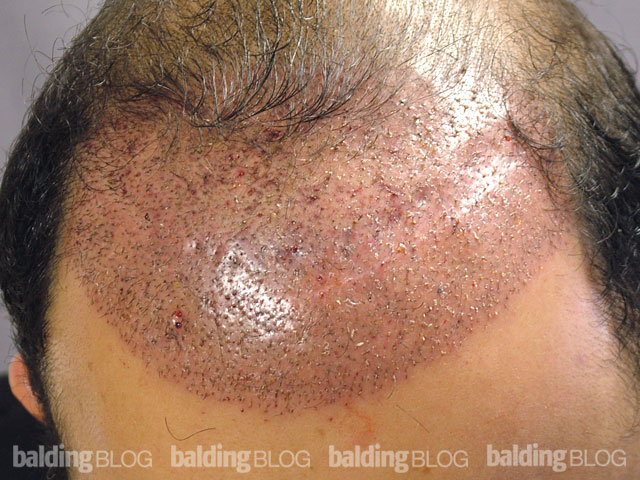
Set 4 (above) shows the pictures the day after surgery where 2800 grafts were transplanted into his frontal area. This 2nd surgery with NHI to repair his hairline should be his last. As his final result will not be in, I want to show you another similar patient, whose repair procedure was documented for our website: Dean’s Story.
I know you want to avoid more transplants, but you should think twice about that because this is a well proven technique for repairs and it will get you the normal hair that you always wanted. Any hypopigmentation is dealt with through the excision and fully camouflaged from the transplant. You can, alternatively, remove the plugs either as an excision or through our FUE technique, one hair group at a time. Repigmentation will require more surgery with less certainty in the end result, than the approach I showed above. Dermabrasion does not work because it tends to produce more hypopigmentation. Lasers leave more hypopigmentation as well.
I did note that you are from southern California, therefore a visit to us in our Los Angeles office would be relatively easy. Come to our open house and meet some of these patients yourself. It is a little last minute, but there is an open house tomorrow in LA from 12pm-2pm. That may get you the confidence you need. Keep in mind that my goal is to keep your cost and the number of surgeries down, getting you to look like a normal, hairy person. That, I believe, should be your goal as well.
More repair before and after photos can be found here: Repair Work Photo Gallery Errors: http://baldingblog.com/photos/051007_before1.jpg is not accessible or supported filetype.http://baldingblog.com/photos/051007_before2.jpg is not accessible or supported filetype.http://baldingblog.com/photos/051007_before3.jpg is not accessible or supported filetype.http://baldingblog.com/photos/051007_before4.jpg is not accessible or supported filetype.http://baldingblog.com/photos/051007_before5.jpg is not accessible or supported filetype.http://baldingblog.com/photos/051007_before6.jpg is not accessible or supported filetype.http://baldingblog.com/photos/051007_6wks1.jpg is not accessible or supported filetype.http://baldingblog.com/photos/051007_6wks2.jpg is not accessible or supported filetype.http://baldingblog.com/photos/051007_6wks3.jpg is not accessible or supported filetype.http://baldingblog.com/photos/051007_post1.jpg is not accessible or supported filetype.http://baldingblog.com/photos/051007_post2.jpg is not accessible or supported filetype.http://baldingblog.com/photos/051007_post3.jpg is not accessible or supported filetype.














